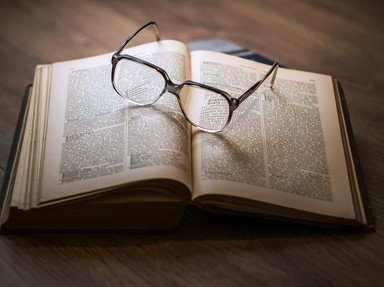Quiz Answer Key and Fun Facts
1. An idea that is overused and lacking in original thought
2. The repetition of consonant sounds
3. An accounting of events over time (real or imagined)
4. Two consecutive lines in a poem that share rhyme and meter
5. An inversion in grammar of a previous sentiment
6. A device in which a plotline is left (temporarily or permanently) unresolved
7. A deliberate exaggeration of a character's traits
8. The use of harsh, discordant sounds in writing
9. An extended (sometimes far-fetched) metaphor
10. An intentional pause placed in a line of poetry
Source: Author
trident
This quiz was reviewed by FunTrivia editor
looney_tunes before going online.
Any errors found in FunTrivia content are routinely corrected through our feedback system.
